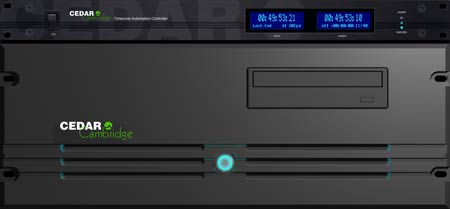Batch Processing
 An audio restoration system that works as quickly, effectively and simply as a print server... That's the concept that lies behind the CEDAR Cambridge Server batch processing system.
An audio restoration system that works as quickly, effectively and simply as a print server... That's the concept that lies behind the CEDAR Cambridge Server batch processing system.
Imagine that you are working on a large network of ingestion systems, processors, RAID arrays, or even other workstations, and that you need to access the unsurpassed audio capabilities of CEDAR's audio restoration and other processes. No problem! You can be sitting on the other side of the studio facility to the CEDAR Cambridge Server system, but if you can see the Server's input folder, you can simply drag-and-drop your audio into this, whereupon it will add the file to the queue (if there is one) and later place the processed audio in a chosen destination.
Think about how this could help you and your company. Every seat in every studio can have access to a set of pre-determined CEDAR setups, no matter where the CEDAR Cambridge Server is physically installed.
Combining background processing and batch processing
We knew the questions that you were going to ask next... "Is it possible to combine multiple instances of CEDAR Cambridge Server in background mode, each with its own batch processing input and output folder, and each with different processing chains and parameter sets? What's more, can I place the output folders on different servers around the network?"
So, rather than wait for you to ask for them, we took care of it. You can set up as many processing environments as you like - say, a declick and debuzz batch processor for old recordings, a mild dehissing batch processor for high quality tapes, and so on - and then you and your colleagues can drop your audio into the appropriate input folder, as you wish. CEDAR Cambridge Server will process the files according to each setup, and the results can be made available to anybody on the network who wants them.
Click here to return to the CEDAR Cambridge Server product announcement.